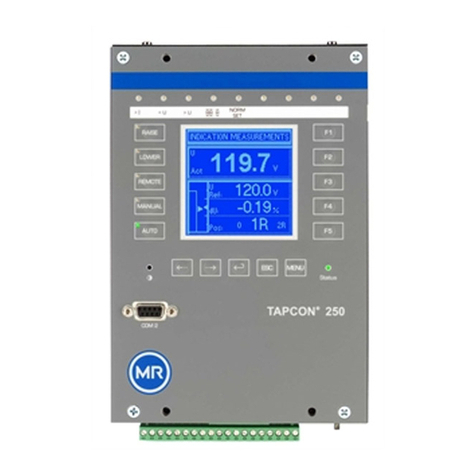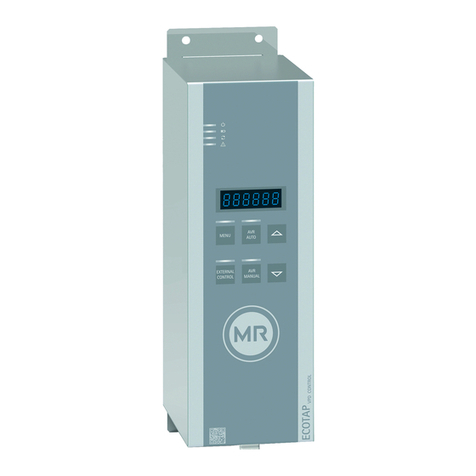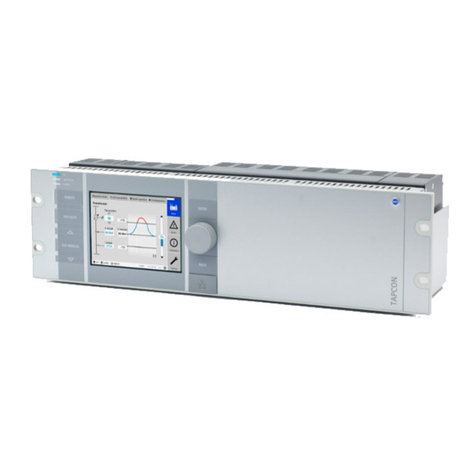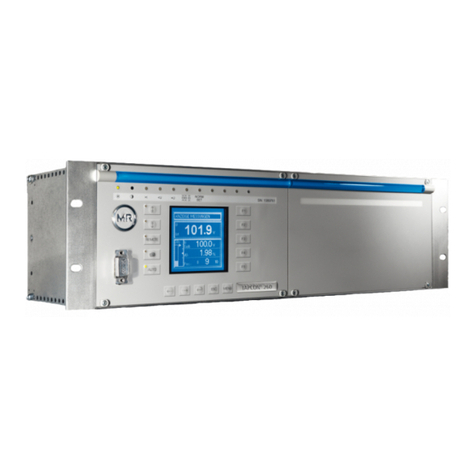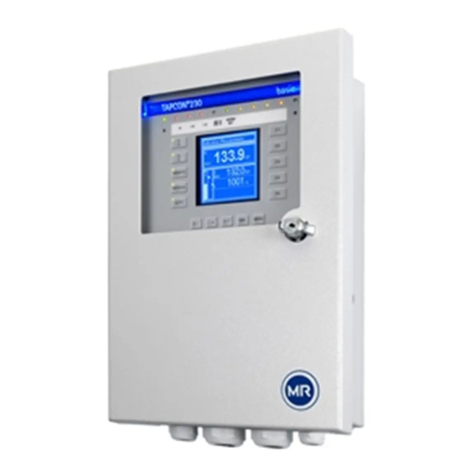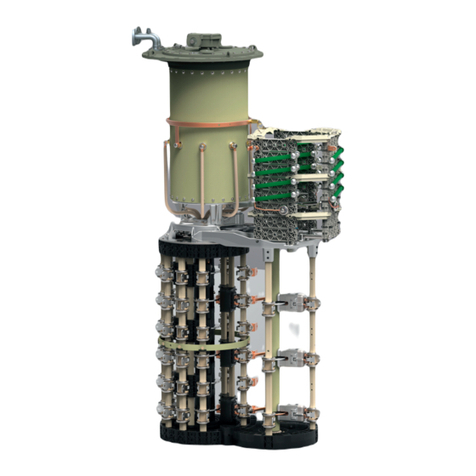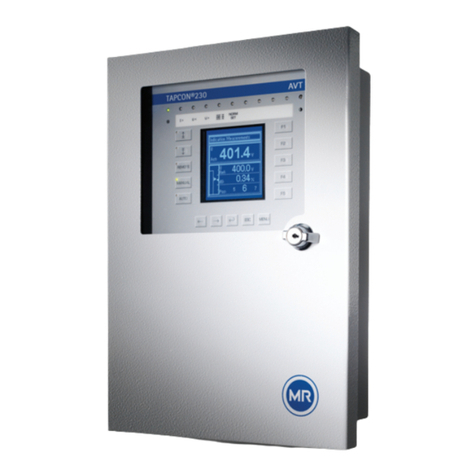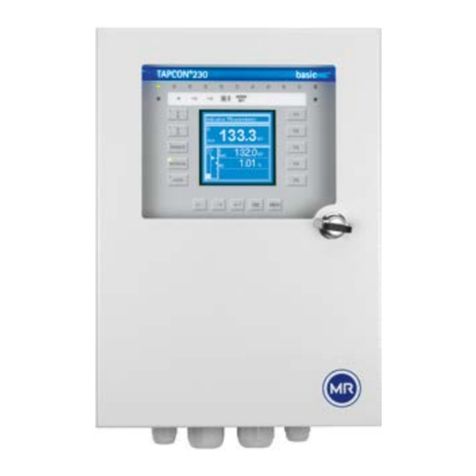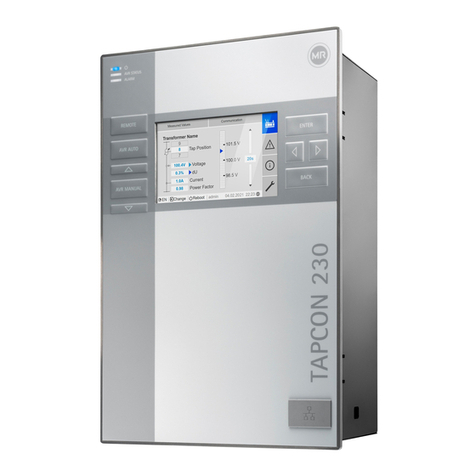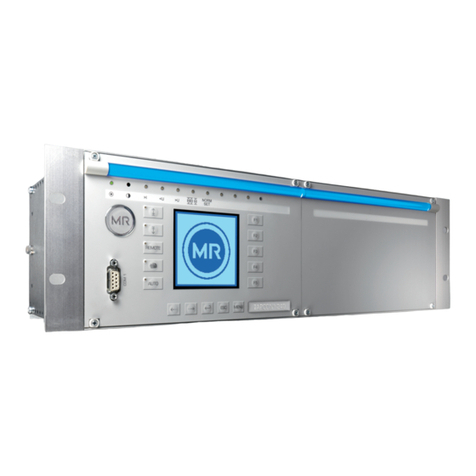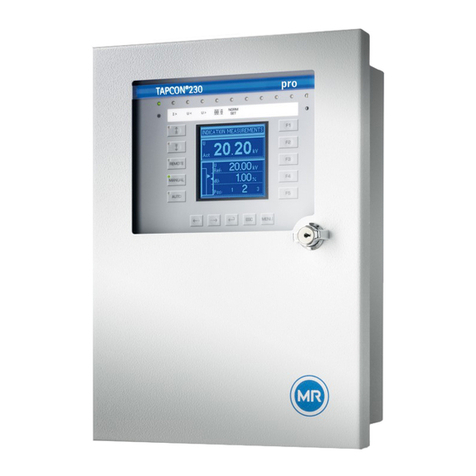
5
251/02 en
1 General
1.3 Design and performance features of the
TAPCON® 230 VC
The electronic voltage regulator TAPCON® 230 VC is mounted
in a protective housing with hinged cover and inspection
win-dow. The protective housing is suitable for both flush
and projected panel mounting.
The front panel contains several function keys for setting the
individual operating parameters.
Display of the operating status is achieved by a 4-line,
16-digit alphanumeric LC display and light emitting diodes.
The electronic voltage regulator is controlled by a micro-
controller (see appendix, block/connection diagram).
Besides a voltage transformer and a current transformer it
contains optocoupler inputs with potential separation as well
as potential-free output relay contacts.
Apart from the usual well-known, versatile and individual set-
ting options for the MR control system, the TAPCON® 230 VC
voltage regulator also offers the option of fast and easy
parametering by introducing the innovative "Normset"
function.
The term „Normset“ function stands for an automatism
which considerably simplifies the configuration of a voltage
regulator. If the desired voltage level is entered while the
„Normset“ function is active, the voltage regulator will
examine the given line/network conditions and proceed to
perform an automatic adaptation of all further inputs
(comprised in part of the pre-parametering and standard
reference values) which used to be required for customary
regulators (also refer to the standard configuration accord-
ing to Sub-menu 2).
The parameters of the regulator can be set by means of a PC
via the incorporated serial interface (RS232) integrated in
the regulator; the appropriate PC software will be furnished
by MR.
A load-dependent line-voltage drop, e.g. of a spur line lead-
ing from the transformer to the load, can be compensated
either by line simulation (Line Drop Compensation) or by
load-current dependent increase of the voltage level
(Z compensation).
Trouble-free operation is ensured by the regulator’s inherent
undervoltage blocking, overcurrent blocking and overvoltage
monitoring.
The functions of the TAPCON® 230 VC voltage regulator are
just about compatible with those of the earlier voltage
regulators VC 100-BU.
NOTE
When voltage regulation is effected by tap transformers
and voltage regulators, it is assumed that a change of the
tap position results in a significant voltage change. When
generators feed the voltage level to be regulated, however,
quite different conditions may result so that a correct
regulation of the voltage cannot be guaranteed. In such
cases MR should be consulted as early as the planning
stage.
Parallel operation follows alternatively the principles of
either minimum circulating reactive current or the Master/
Follower principle for two transformers.
Using a supplementary device, up to six transformers can be
controlled in parallel operation using the principle of
minimum reactive current.
